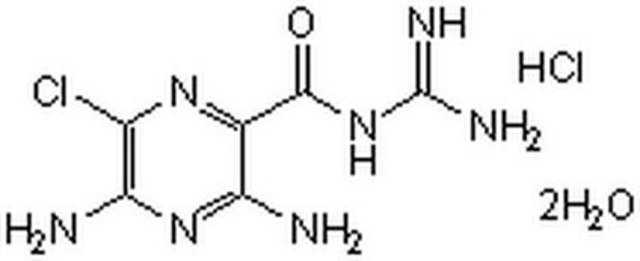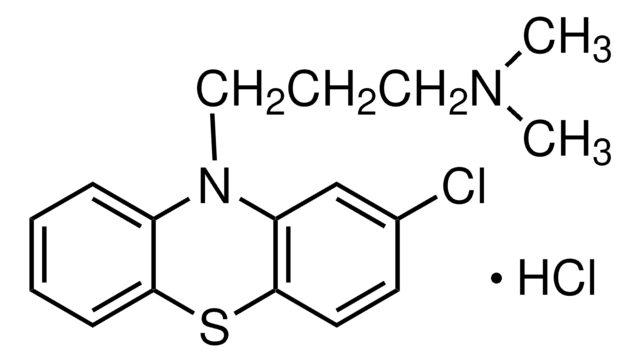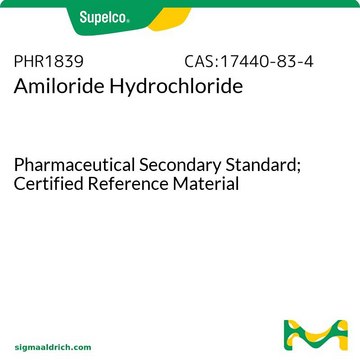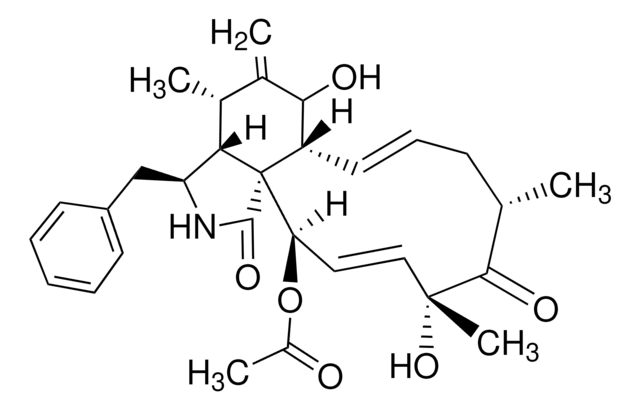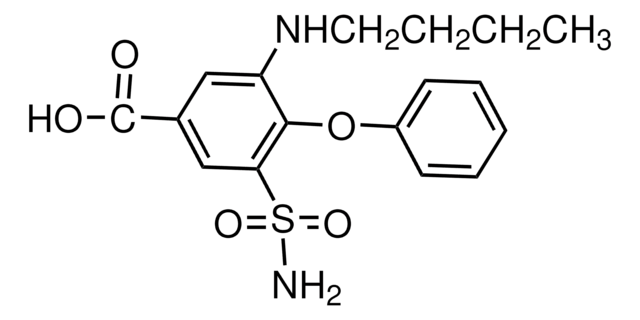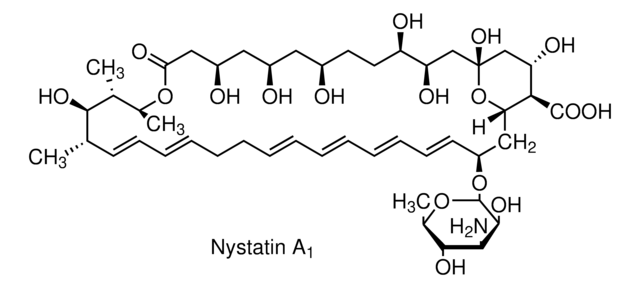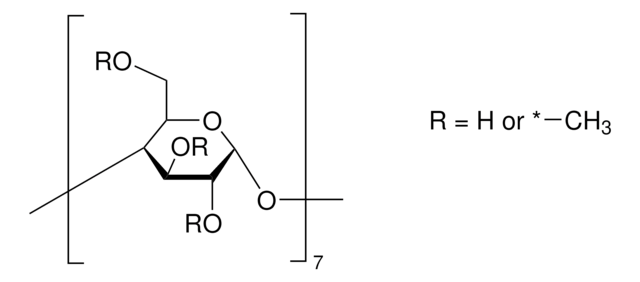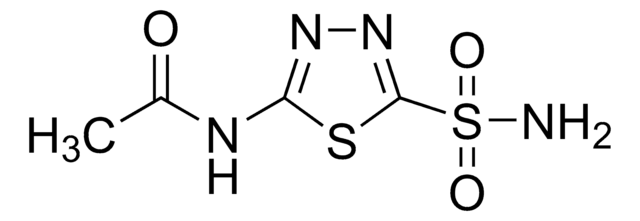A7410
Amiloride hydrochloride hydrate
≥98% (HPLC), powder, T-type calcium channel blocker
Synonym(s):
N-Amidino-3,5-diamino-6-chloropyrazinecarboxamide hydrochloride hydrate
About This Item
Recommended Products
Product Name
Amiloride hydrochloride hydrate, ≥98% (HPLC), powder
Quality Level
Assay
≥98% (HPLC)
form
powder
color
yellow
mp
285-288 °C (dec.)
solubility
H2O: 50 mg/mL, clear, yellow-green
originator
Perrigo
storage temp.
room temp
SMILES string
O.Cl.NC(=N)NC(=O)c1nc(Cl)c(N)nc1N
InChI
1S/C6H8ClN7O.ClH.H2O/c7-2-4(9)13-3(8)1(12-2)5(15)14-6(10)11;;/h(H4,8,9,13)(H4,10,11,14,15);1H;1H2
InChI key
WDZJJRLYFQNCQL-UHFFFAOYSA-N
Gene Information
human ... ABP1(26) , ACCN1(40) , ACCN2(41) , PLAU(5328) , SCNN1A(6337) , SCNN1B(6338) , SCNN1D(6339) , SCNN1G(6340) , SLC9A1(6548) , TNF(7124)
mouse ... Abp1(76507) , Accn1(11418) , Accn2(11419) , Plau(18792) , Scnn1a(20276) , Scnn1b(20277) , Scnn1d(140501) , Scnn1g(20278) , Slc9a1(20544)
rat ... Abp1(65029) , Accn1(25364) , Accn2(79123) , Plau(25619) , Scnn1a(25122) , Scnn1b(24767) , Scnn1g(24768) , Slc9a1(24782)
Application
Biochem/physiol Actions
Features and Benefits
Caution
Signal Word
Danger
Hazard Statements
Precautionary Statements
Hazard Classifications
Acute Tox. 3 Oral
Storage Class Code
6.1C - Combustible acute toxic Cat.3 / toxic compounds or compounds which causing chronic effects
WGK
WGK 3
Flash Point(F)
Not applicable
Flash Point(C)
Not applicable
Personal Protective Equipment
Regulatory Information
Choose from one of the most recent versions:
Already Own This Product?
Find documentation for the products that you have recently purchased in the Document Library.
Articles
Analysis of 20 pharmaceutical compounds in calf serum using Supel™ Swift HLB SPE cartridge for cleanup and LC-MS determination and another commercially available HLB cartridge for comparison.
Discover Bioactive Small Molecules for ADME/Tox
Our team of scientists has experience in all areas of research including Life Science, Material Science, Chemical Synthesis, Chromatography, Analytical and many others.
Contact Technical Service